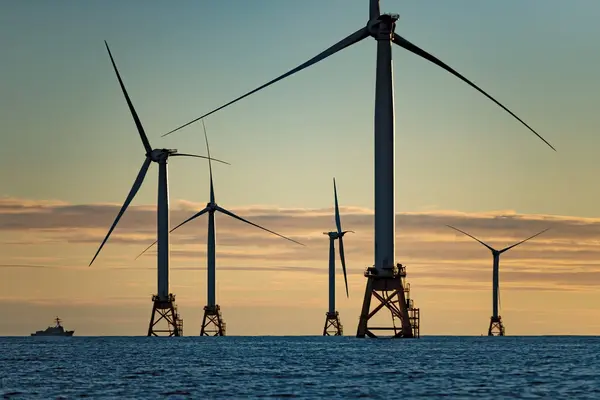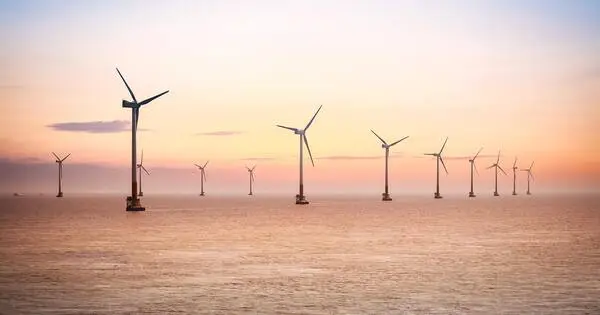Offshore wind, which is now widely acknowledged as a proven and reliable source of renewable energy, is expected to grow in the coming years. Global installed offshore wind capacity is expected to reach 630 gigatonnes (GW) by 2050, up from 40 GW in 2020, with an upside potential of 1,000 GW in a 1.5° pathway scenario, according to our research.
With the federal government planning the largest sale of offshore wind farm leases in the country’s history, a new Cornell University study could help inform offshore wind farm development by providing detailed models characterizing the frequency, intensity, and height of low-level jet streams over the United States’ Atlantic coastal zone.
The research, “Occurrence of Low-Level Jets Over the Eastern U.S. Coastal Zone at Heights Relevant to Wind Energy,” published in the journal Energies. The study finds that jet streams do occur low enough to reach wind turbine rotor planes at planned wind farms offshore from the U.S. East Coast, according to co-author Jeanie Aird, doctoral student in the Barthelmie Wind Energy Laboratory at Cornell.
Our study specifically focuses on low-level jets that occur with maxima at approximately 500 meters or below, since at lower heights they are more likely to interact with wind turbines.
Professor Sara C. Pryor
Low-level jets, which are fast-moving currents of air in the lowest two kilometers of the atmosphere, can have both positive and negative effects on wind turbines. They typically increase wind speed, which can improve turbine performance such as power output, but they can also increase the loads on turbine blades and towers due to higher wind shear and turbulence. Understanding their occurrence is critical for wind turbine longevity and power production planning.
Aird looked at two years of simulations from the Weather Research and Forecasting (WRF) model, which was provided by Sara C. Pryor, a professor in Cornell’s Department of Earth and Atmospheric Sciences. She found that low-level jets occur more frequently at the offshore wind energy lease areas south of Massachusetts than those in the New York Bight (stretching roughly from coastal New Jersey to eastern Long Island) and further south.

“Our study specifically focuses on low-level jets that occur with maxima at approximately 500 meters or below,” Aird said, “since at lower heights they are more likely to interact with wind turbines.”
Aird discovered that low-level jets can occur at approximately 150 meters above sea level, implying that they are likely to collide with offshore wind turbines planned for the United States’ East Coast. The turbines chosen for the Vineyard Wind farm off the coast of Massachusetts, for example, have a hub height of 140 meters.
“Our analysis provides maps of low-level jet occurrence, revealing that these phenomena occur up to 12% of the time in late spring and early summer when there are strong horizontal temperature gradients,” Aird explained. “We hope that this research will be useful to offshore wind farm developers, and we are working on developing a predictive method for the occurrence of low-level jets.”
Rapidly expanding government commitments and technological progress are contributing to the positive outlook in both established markets and countries new to offshore wind. More companies are pursuing offshore wind projects, some of which may involve challenges and risks, such as commercial requirements from authorities, difficult project economics, and the need to build or bolster capabilities.
Prior to this study, there was uncertainty about how frequently low-level jets would occur in this area, as well as their speeds and heights, due to a relative lack of wind climatology measurements for the East Coast. The team used two years of high-resolution WRF data over a wide geographical domain, covering 13 of the 16 planned offshore lease areas, to analyze the low-level jets.
















